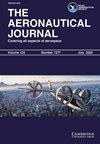利用实验设计理论和响应面模型对超音速运输机进行多学科优化
IF 1.4
4区 工程技术
Q2 ENGINEERING, AEROSPACE
引用次数: 111
摘要
工程设计优化问题中数值噪声的存在阻碍了许多基于梯度的优化方法的应用。这种数值噪声可能导致梯度计算不准确,从而在优化过程中减慢或阻止收敛,或者可能促进收敛到虚假的局部最优。数值噪声造成的问题在飞机设计应用中尤其严重,因为对实际飞机配置进行单个空气动力学或结构分析可能需要超级计算机上数十小时的CPU时间。分析的计算费用加上数值噪声造成的收敛困难是执行飞机多学科设计优化的重大障碍。为了解决这些问题,已经开发了一种程序来创建亚音速和超音速气动性能数量的无噪声代数模型,用于高速民用运输(HSCT)飞机配置的优化。该程序采用实验统计设计理论和响应面建模方法来建立无噪声的代数模型。结果从一个样本HSCT设计问题涉及十个变量提出,以证明这种方法的效用。本文章由计算机程序翻译,如有差异,请以英文原文为准。
Multidisciplinary optimisation of a supersonic transport using design of experiments theory and response surface modelling
Abstract The presence of numerical noise in engineering design optimisation problems inhibits the use of many gradient-based optimisation methods. This numerical noise may result in the inaccurate calculation of gradients which in turn slows or prevents convergence during optimisation, or it may promote convergence to spurious local optima. The problems created by numerical noise are particularly acute in aircraft design applications where a single aerodynamic or structural analysis of a realistic aircraft configuration may require tens of CPU hours on a supercomputer. The computational expense of the analyses coupled with the convergence difficulties created by numerical noise are significant obstacles to performing aircraft multidisciplinary design optimisation. To address these issues, a procedure has been developed to create noise-free algebraic models of subsonic and supersonic aerodynamic performance quantities, for use in the optimisation of high-speed civil transport (HSCT) aircraft configurations. This procedure employs methods from statistical design of experiments theory and response surface modelling to create the noise-free algebraic models. Results from a sample HSCT design problem involving ten variables are presented to demonstrate the utility of this method.
求助全文
通过发布文献求助,成功后即可免费获取论文全文。
去求助
来源期刊

Aeronautical Journal
工程技术-工程:宇航
CiteScore
3.70
自引率
14.30%
发文量
86
审稿时长
6-12 weeks
期刊介绍:
The Aeronautical Journal contains original papers on all aspects of research, design and development, construction and operation of aircraft and space vehicles. Papers are therefore solicited on all aspects of research, design and development, construction and operation of aircraft and space vehicles. Papers are also welcomed which review, comprehensively, the results of recent research developments in any of the above topics.
 求助内容:
求助内容: 应助结果提醒方式:
应助结果提醒方式:


